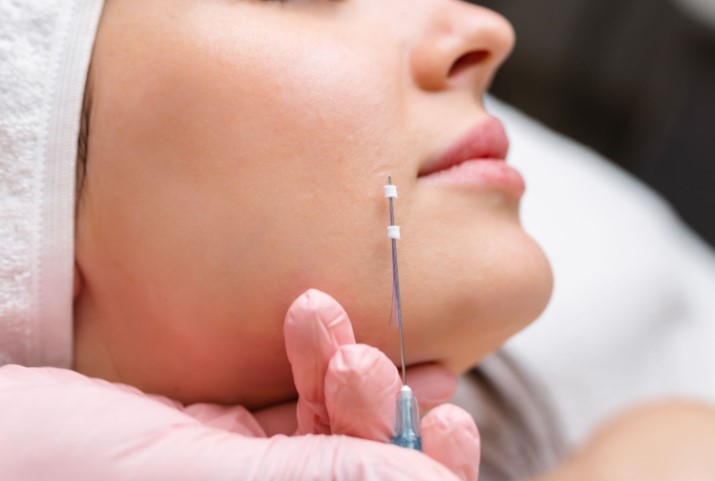PDO thread lifts are a minimally invasive way to combat signs of aging in the face and give some lift to sagging skin. It’s an ideal choice for those who want to handle issues such as sagging jowls without surgery. It’s made out of biodegradable polyester, a material that’s been used in surgeries since the 1980s. Results are visible immediately.
What Is a PDO Thread Lift?
Thin “threads” made out of biodegradable polyester have tiny barbs on them that catch on the facial tissue, thereby giving lift to the areas in which they’re placed.
After cleaning the area and administering some local anesthetic, the doctor will make a small incision and place a cannula inside. The thread is pulled up, and the tiny barbs lift the skin up from the inside as the thread is pulled through the area being treated.
These threads last for about six months, after which they are absorbed. However, in their place, the skin forms collagen, which gives further lift. The result will not be as dramatic, however, and some may opt to get the procedure redone around this time.
What Areas of the Face Can PDO Threads Be Used?
PDO threads can be used to help lift the skin on many features of the face, such as the cheeks and jowls to lift the skin around the eyes and on the neck.
When Will I See Results from a PDO Thread Lift?
Results are visible immediately after the procedure.
How Long Does a PDO Thread Lift Last?
In general, thread lifts last longer in younger people, and the effects go away more quickly in older people. Sutures dissolve after about six months, but the effects can last a year or more depending on age and other factors.
Does Getting a PDO Thread Lift Hurt?
No, this procedure should not hurt. A local anesthetic is given beforehand to ensure you don’t feel any pain.
How to Minimize Side Effects after PDO Thread Lift
Some swelling, redness, and other side effects may occur after a PDO thread lift, but there are steps you can take to minimize side effects. Your doctor will likely advise you to avoid certain medications and other things that can cause complications in the days before your procedure, such as ibuprofen, aspirin, smoking, and alcohol.
After your procedure, you should avoid exercise for at least two days. If you experience any swelling, a cool compress can help minimize it. You can continue your skincare routine (unless otherwise instructed by your doctor), but be especially gentle applying products around the treated area.




